Figures & data
FIGURE 1. (a) Winter snow depth, (b) winter soil temperatures, and (c) the regression of snow depth and soil temperatures (r2 = 0.3) on Libby Flats during the winters of 1998, 1999, and 2000
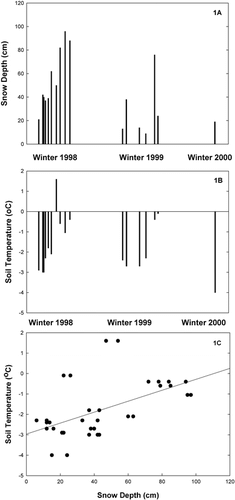
FIGURE 2. Annual net ecosystem CO2 exchange (mean ± 1 SE) in ungrazed and grazed areas at Libby Flats, Wyoming. Asterisks signify significant (P < 0.05) differences between ungrazed and grazed treatments at a sampling date
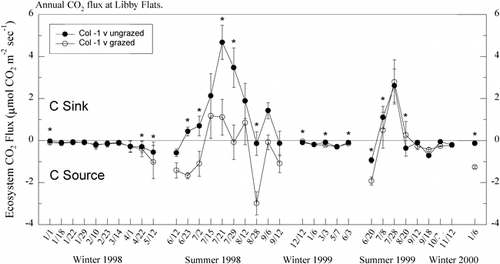
FIGURE 3. Rates of gross photosynthesis and ecosystem respiration in ungrazed and grazed areas at Libby Flats, Wyoming, during the snow-free periods of 1998 and 1999. Asterisks signify significant (P < 0.05) differences between treatments at a sampling date
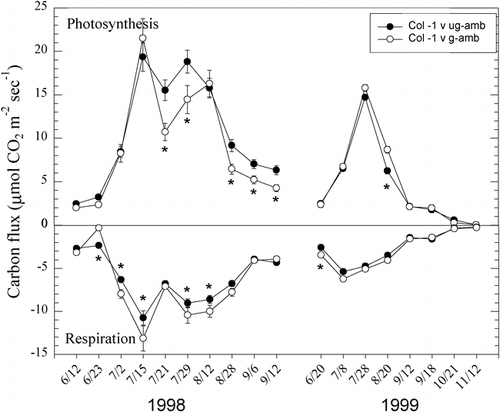
FIGURE 4. Diurnal patterns of net ecosystem exchange (NEE) for 4 sample dates in 1998 at Libby Flats, Wyoming, for areas that were grazed and for areas that were ungrazed

FIGURE 5. Growing-season (1999) patterns of (a) net nitrification and (b) net N mineralization in an ungrazed and a grazed area of Libby Flats, Wyoming. Shown are means ± 1 SE. Asterisks indicate significant (P < 0.05) differences between treatments at a sampling date

FIGURE 6. Seasonal (1999) patterns of extractable inorganic soil N in grazed and ungrazed areas of Libby Flats, Wyoming. Shown are means ± 1 SE of (a) NH4 +, (b) NO3 −, and (c) total N. Asterisks indicate significant (P < 0.05) differences between treatments at a sampling date
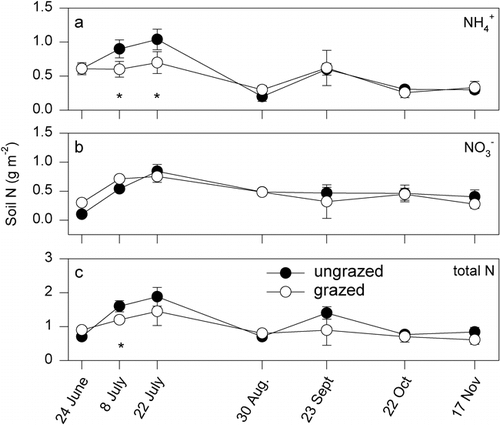
FIGURE 7. Seasonal pattern of summer (a) gravimetric soil water content, measured from 0–10-cm depth, and (b) soil temperature, measured at 5-cm depth in 1999. Shown are means ± 1 SE. Asterisks indicate significant (P < 0.05) differences between treatments at a sampling date
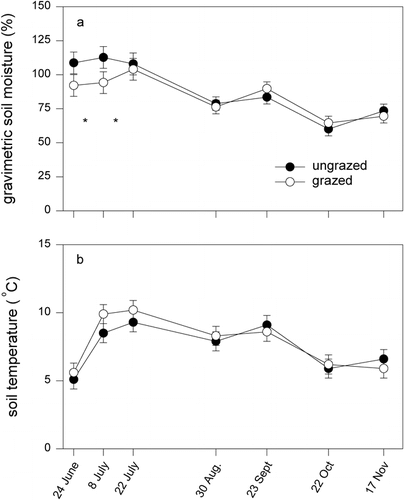
FIGURE 8. Conceptual model depicting the interannual variation in net C exchange as it relates to the long-term carbon-sequestration characteristics of grazed and ungrazed alpine grasslands in southeast Wyoming. While both grazed and ungrazed areas have periods of carbon gain and carbon loss, on average the grazed area accumulates more soil C than the ungrazed area, as indicated by the long-term trajectory
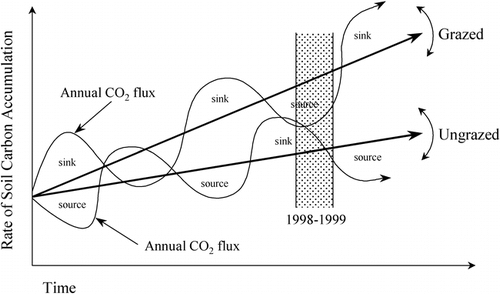
Table 1 Total precipitation for the National Atmospheric Deposition Program site located at Glacier Lakes Ecosystem Experimental site 5 km from the Libby Flats study site (amounts in cm)
Table 2 Soil and vegetation properties of ungrazed and grazed alpine grassland at Libby Flats and at Hay Creek, Wyoming